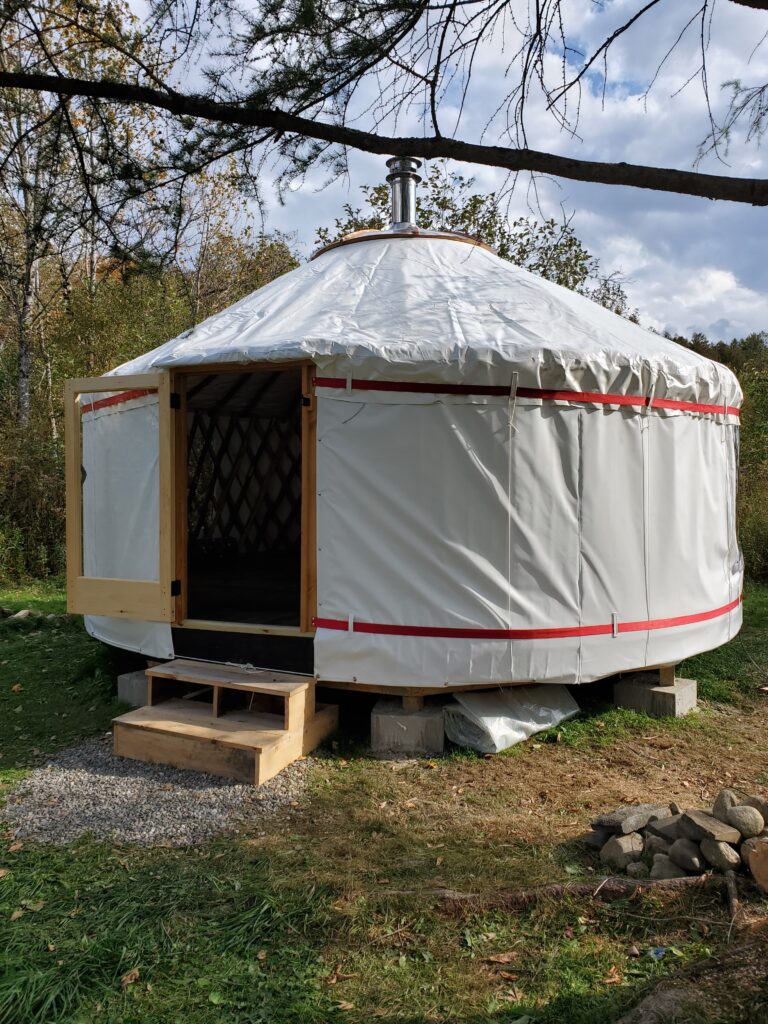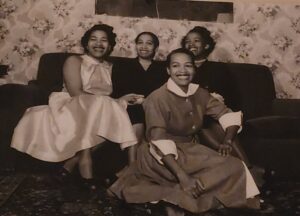Dot’s Place

By Dr. Opeyemi Parham, donor of NBNC’s new yurt
Editor’s note: NBNC has received the generous donation of a yurt, “Dot’s Place,” from Montpelier resident Dr. Opeyemi Parham. The yurt, which was displaced by the July 2023 flood, will move to NBNC this spring. It has been — and will continue to be at NBNC — a nature-based BIPOC affinity space, offering central Vermont’s Black, Indigenous, and People of Color and their allies safe and equitable access to the natural world. Here is the yurt’s story.
In the late 1920s, a Black family in Union Point, Georgia, decided to leave. Being descendants of enslaved Africans, life in Georgia tilling land they owned carried the risk of death at the hands of white Klansmen. The Parham family joined the Great Migration, landing outside of Chicago in Evanston, Illinois.
Black people who landed in Evanston generally worked for white college professors at Northwestern University. Alfred Parham, the father, had completed one year of college. In Illinois, he became a chauffeur and later a steel worker. His wife, Emmie Alexander, took in laundry for white people. Emmie was 21 when Dorothy Louise (“Dot”) was born. Dot was the third in a family of four daughters. All four daughters graduated from the one integrated (but de facto segregated) high school in Evanston, and went on to attend Historically Black Colleges and Universities.
 Dot had a dream of becoming a farmer, and it was her plan, pre-college, to return to that land in Georgia and farm it. But she unexpectedly won a full scholarship to Howard University, and there was no training in farm skills at Howard, the “Black man’s Harvard.” For that, she would have needed an agricultural and mechanical school. Farming land — getting dirt under one’s fingernails — was not something Black people who won scholarships to prestigious schools “ought” to be considering, especially Black women. So she went to Howard and majored in botany.
Dot had a dream of becoming a farmer, and it was her plan, pre-college, to return to that land in Georgia and farm it. But she unexpectedly won a full scholarship to Howard University, and there was no training in farm skills at Howard, the “Black man’s Harvard.” For that, she would have needed an agricultural and mechanical school. Farming land — getting dirt under one’s fingernails — was not something Black people who won scholarships to prestigious schools “ought” to be considering, especially Black women. So she went to Howard and majored in botany.
Post-graduation, Dot worked as a switchboard operator for “Ma Bell” (the Bell telephone system), and rose to become the first Black manager with AT&T. She married a self-made man, and they settled in the Baldwin Hills area of Los Angeles. In the early 1970s, she and her sisters sold that Georgia land. When Dot died, having had no children, she gifted ten individuals that she loved — some biological family, others “family of the heart” — access to intergenerational wealth from the sale of that Baldwin Hills home. As Dot’s niece and one of those ten individuals, I used my share of this wealth to purchase a yurt, which I named Dot’s Place.
Dot never farmed. BIPOC Americans have often found themselves excluded from leisure time in nature and from programs that educate us about our relationships to the natural world. But now Dot’s dreams will be continued as NBNC fulfills its intentions to weave Dot’s Place into their ongoing efforts to restore and increase access to nature
for Black, Indigenous, and other People of Color.
Thank you for being a part of a dream where BIPOC Vermonters get to go back to the land and reconnect with nature, too!

